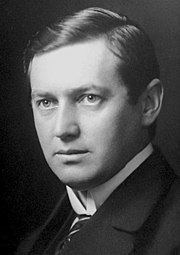Nationality Swedish Name Manne Siegbahn Fields Physics Role Physicist | Alma mater University of Lund Spouse Karin Hogbom | |
 | ||
Born Karl Manne Georg Siegbahn3 December 1886Orebro, Sweden ( 1886-12-03 ) Died September 26, 1978, Stockholm, Sweden Notable awards Nobel Prize in Physics (1924) | ||
Children Bo Siegbahn, Kai Siegbahn | ||
Manne Siegbahn | Wikipedia audio article
Karl Manne Georg Siegbahn (3 December 1886 – 26 September 1978) was a Swedish physicist who was awarded the Nobel Prize in Physics in 1924 "for his discoveries and research in the field of X-ray spectroscopy".
Contents
- Manne Siegbahn Wikipedia audio article
- Biography
- X ray spectroscopy
- Awards and honours
- Personal life
- References
Biography
Siegbahn was born in Örebro, Sweden, and his parents was Georg Siegbahn and Emma Zetterberg. He graduated in Stockholm 1906 and begun his studies at Lund University the same year. During his education he was amanuensis for Johannes Rydberg. In 1908 he studied at the University of Göttingen. He obtained his Ph.D. at the Lund University in 1911, his thesis was titled Magnetische Feldmessungen (magnetic field measurements). He became acting professor for Rydberg when his health was failing, and succeeded him as full professor in 1920. However, in 1922 he left Lund for a professorship at the Uppsala University.
In 1937, Siegbahn was appointed Director of the Physics Department of the Nobel Institute of the Royal Swedish Academy of Sciences. In 1988 this was renamed the Manne Siegbahn Institute (MSI). The institute research groups have been reorganized since, but the name lives on in the Manne Siegbahn Laboratory hosted by Stockholm University.
X-ray spectroscopy
Manne Siegbahn begun his studies about X-ray spectroscopy in 1914. In the beginning he used the same type of spectrometer as Henry Moseley did for finding the relationship between the wavelength of some elements and their place at the periodic system. Shortly thereafter he developed improved experimental apparatus which allowed him to make very accurate measurements of the X-ray wavelengths produced by atoms of different elements. Also, he found that several of the spectral lines that Moseley had discovered consisted of more components. By studying these components and improving the spectrometer, Siegbahn got an almost complete understanding of the electron shell. He developed a convention for naming the different spectral lines that are characteristic to elements in X-ray spectroscopy, the Siegbahn notation. Siegbahn's precision measurements drove many developments in quantum theory and atomic physics.
Awards and honours
Siegbahn was awarded the Nobel Prize in Physics in 1924. He won the Hughes Medal 1934 and Rumford Medal 1940. In 1944, he patented the Siegbahn pump. Siegbahn was elected a Foreign Member of the Royal Society (ForMemRS) in 1954.
Personal life
Siegbahn married Karin Högbom in 1914. They had two children: Bo Siegbahn (1915–2008), a diplomat and politician, and Kai Siegbahn (1918–2007), a physicist who received the Nobel Prize in Physics in 1981 for his contribution to the development of X-ray photoelectron spectroscopy.
